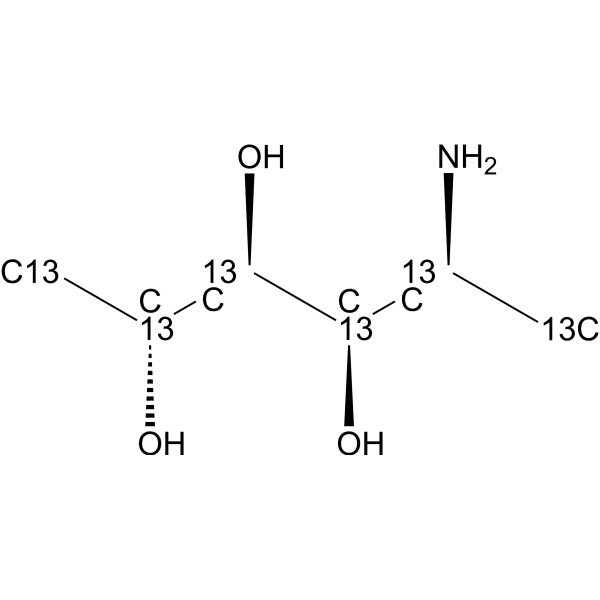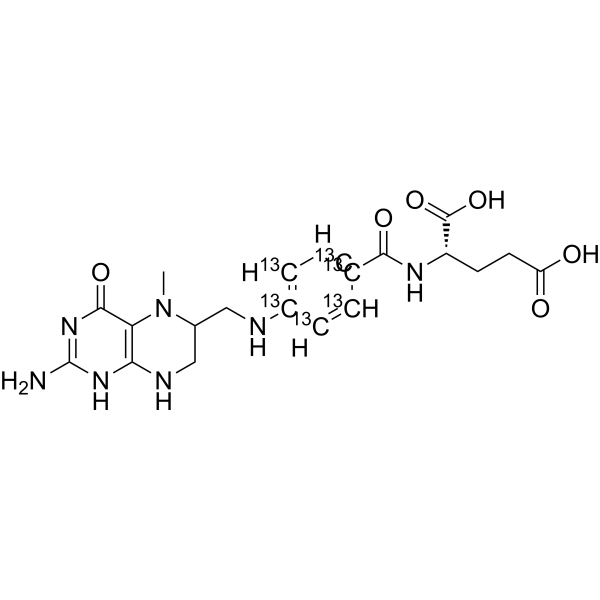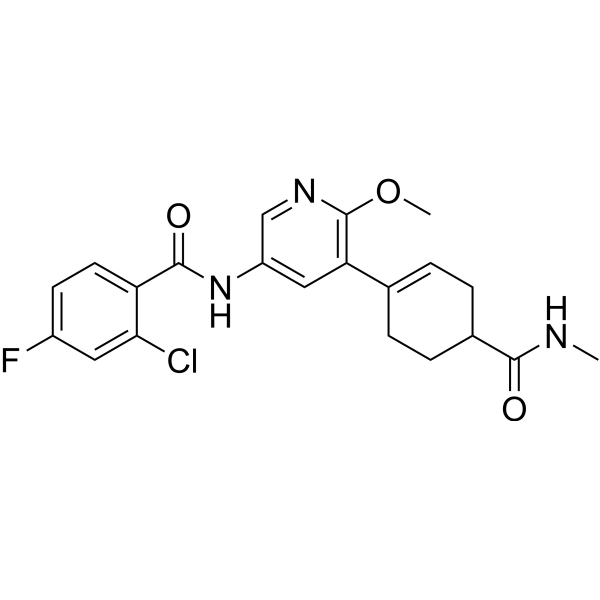- Anti-infection
- Antibody-drug Conjugate/ADC Related
- Apoptosis
- Autophagy
- Cell Cycle/DNA Damage
- Cytoskeleton
- Epigenetics
- GPCR/G Protein
- Immunology/Inflammation
- JAK/STAT Signaling
- MAPK/ERK Pathway
- Membrane Transporter/Ion Channel
- Metabolic Enzyme/Protease
- Neuronal Signaling
- NF-κB
- PI3K/Akt/mTOR
- PROTAC
- Protein Tyrosine Kinase/RTK
- Stem Cell/Wnt
- TGF-beta/Smad
- Vitamin D Related/Nuclear Receptor
- Others
Anti-infection
Apoptosis
Cell Cycle/DNA Damage
Epigenetics
GPCR/G Protein
- 5-HT Receptor
- Adenylate Cyclase
- Adhesion G Protein-coupled Receptors (AGPCRs)
- Adrenergic Receptor
- Amylin Receptor
- Angiotensin Receptor
- Apelin Receptor (APJ)
- Arf Family GTPase
- Arrestin
- Bombesin Receptor
- Bradykinin Receptor
- Cannabinoid Receptor
- CaSR
- CCR
- CGRP Receptor
- Chemerin Receptor
- Cholecystokinin Receptor
- CRFR
- CXCR
- EBI2/GPR183
Immunology/Inflammation
Membrane Transporter/Ion Channel
Metabolic Enzyme/Protease
- 11β-HSD
- 15-PGDH
- 17β-HSD
- 5 alpha Reductase
- Acetolactate Synthase (ALS)
- Acetyl-CoA Carboxylase
- Acetyl-CoA synthetase
- Acyltransferase
- ADAMTS
- Adiponectin Receptor
- Aldehyde Dehydrogenase (ALDH)
- Aldose Reductase
- Amine N-methyltransferase
- Aminoacyl-tRNA Synthetase
- Aminopeptidase
- Aminotransferases (Transaminases)
- Amylases
- Angiotensin-converting Enzyme (ACE)
- ANGPTL
- Apolipoprotein
Neuronal Signaling
Protein Tyrosine Kinase/RTK
Stem Cell/Wnt
- Compound Screening Libraries
- Bioactive Screening Libraries
- •Bioactive Compound Library
- Drug Repurposing Series
- •FDA-Approved Drug Library
- •Drug Repurposing Compound Library
- Natural Products Series
- •Natural Product Library
- •Natural Product-like Compound Library
- Metabolism Series
- •Human Endogenous Metabolite Compound Library
- Disease Related Compound Libraries
- Signaling Pathway Series
- Fragment Libraries
- Diversity Compound Libraries
- •50K Diversity Library
- •5K Scaffold Library
- •3D Diverse Fragment Library
- Virtual Screening
- •50K Virtual Diversity Library
- •10M Virtual Diversity Library
- Recombinant Proteins
- Cytokines and Growth Factors
- Immune Checkpoint Proteins
- CAR-T Related Proteins
- CD Antigens
- Fc Receptors
- Receptor Proteins
- Enzymes & Regulators
- Complement System
- Ubiquitin Related Proteins
- Viral Proteins
- Biotinylated Proteins
- Fluorescent-labeled Recombinant Proteins
- GMP-grade Proteins
- Animal-free Recombinant Proteins
- Protein Expression Service
- Custom Synthesis Service
- ADC-Related Custom Services
- PROTAC-Related Custom Services
- Cytokines and Growth Factors
- Immune Checkpoint Proteins
- CAR-T Related Proteins
- CD Antigens
- Fc Receptors
- Receptor Proteins
- Enzymes & Regulators
- Complement System
- Ubiquitin Related Proteins
- Viral Proteins
- Biotinylated Proteins
- Fluorescent-labeled Recombinant Proteins
- GMP-grade Proteins
- Animal-free Recombinant Proteins
- Others
- View More
CAR-T Related Proteins
- CD27 Ligand/CD70
- CD4
- CD19
- CD27 Ligand/CD70
- CD123
- CD138/Syndecan-1
- Epithelial Cell Adhesion Molecule (EpCAM)
- Folate Receptor 1
- GPC-3
- Guanylate Cyclase 2C
- ErbB2/HER2
- ErbB3/HER3
- c-Met/HGFR
- MSLN
- CA-125
- ROR1
- CEACAM-5
- CD314/NKG2D
- Prostate Specific Membrane Antigen
- CD319/SLAMF7
- TROP-2
- Siglec-6
- Folate Receptor alpha (FR-alpha)
- CD314/NKG2D
- Siglec-3/CD33
- CD27 Ligand/CD70
- CD319/SLAMF7
- ErbB2/HER2
- Siglec-3/CD33
- CD7
- MUC-1/CD227
CD Antigens
- T Cell CD Proteins
- B Cell CD Proteins
- NK Cell CD Proteins
- Macrophage CD Proteins
- Monocyte CD Proteins
- Stem Cell CD Proteins
- Platelet CD Proteins
- Erythrocyte CD Proteins
- Dendritic Cell CD Proteins
- Epithelial cell CD Proteins
- Endothelial cell CD Proteins
- Signal Transduction-related CD Proteins
- Cell Adhesion-related CD Proteins
Receptor Proteins
- Receptor Tyrosine Kinases
- Receptor Serine/Threonine Kinases
- Receptor Tyrosine Phosphatase
- Receptor Guanylyl Cyclase Family
- Cell Adhesion Molecules (CAMs)
- G-Protein-Coupled Receptors (GPCRs)
- Nuclear Receptor Superfamily
- Pattern Recognition Receptors
- Notch family
- Siglec
- Leukocyte Immunoglobin-like Receptors
- Killer-Cell Immunoglobulin-like Receptors
- Cytokine Receptors
Enzymes & Regulators
- Oxidoreductases (EC 1)
- Transferases (EC 2)
- Hydrolases (EC 3)
- Lyases (EC 4)
- Isomerases (EC 5)
- Ligases (EC 6)
- Translocases (EC 7)
- Matrix Metalloproteinases
- ADAMs/ADAMTSs
- Cathepsin
- Carboxypeptidase
- Angiotensin-converting Enzymes
- Caspase
- Carbonic Anhydrase
- Serine/Threonine Kinase Proteins
- Protein Tyrosine Kinases
- Phosphatase
- Topoisomerase
- Protease Inhibitors
- Protein Kinase Inhibitor Peptide (PKI)
- Cyclin-Dependent Kinase Inhibitor Proteins
- Cystatin Family
- Molecular Biology
- •Nucleic Acid Gel Electrophoresis
- •Vector Construction
- •Restriction Endonuclease
- •Materials
- •PCR & qPCR
- •RT-PCR
- •Sequencing
- Protein Biology
- •Protein Sample Preparation
- •Protein Purification
- •Protein Electrophoresis & WB
- •Labeling Kit
- •Multiple Fluorescent Staining
- •Immunoassay
- •Immunoprecipitation Kit
- Cell Biology
- •Cell Culture
- •Cell Analysis
- •3D Cell Culture
- •Cell Isolation
- View More
- Custom Synthesis Service
- Bulk and Custom Synthesis Service
- ADC-Related Custom Services
- PROTAC-Related Custom Services
- Custom Reference Standard Products
- Custom Peptide Synthesis
- Protein Expression Service
- Recombinant Antibody Expression Service
- Protein Crystal Structure Elucidation
- Oligonucleotide Synthesis
- Fluorescent labeling Service
- Custom Synthesis of Stable Isotope-Labeled Compounds
- One-stop CDMO Service
- One-stop Compound Screening Platform
- Virtual Screening
- Molecular dynamics simulation
- Cell-based Compound Screening
- Ion Channel Screening
- Kinase Screening Service
- Surface Plasmon Resonance (SPR) Assay Service
- GPCR Bioassay Screening Services
- Nuclear Receptor Screening Services
- Affinity Mass Spectrometry
- DEL Synthesis and Screening
- Molecular Interaction Assay Service
- Drug Target Identification Service
- AI-Driven Drug Screening
- Molarity Calculator
- Dilution Calculator















![7-[α-L-Arabinopyranosyl-(1→6)-β-D-glucopyranosyloxy]cuminol](http://file.medchemexpress.eu/product_pic/hy-n11122.gif)












































































































































































































































































































































































































































































































































































































































































































































































































































































































































































































































![Dibenzo[a,c]anthracene-13C6](http://file.medchemexpress.eu/product_pic/hy-w011577s1.gif)







































![[1,1'-Biphenyl]-3-amine-13C6 hydrochloride](http://file.medchemexpress.eu/product_pic/hy-w106014s.gif)















































































































































































![Dibenz[a,h]anthracene (Standard)](http://file.medchemexpress.eu/product_pic/hy-w013053r.gif)


















































![6-Bromo-1-methyl-1H-benzo[d]imidazol-2(3H)-one](http://file.medchemexpress.eu/product_pic/hy-w067159.gif)























































































































![6-(3-Nitrophenyl)-5H-dibenzo[c,e]azepine-5,7(6H)-dione](http://file.medchemexpress.eu/product_pic/hy-q51222.gif)


































































































































































































































































![7H-Dibenzo[c,g]carbazole](http://file.medchemexpress.eu/product_pic/hy-119983.gif)








![[Nle20] H4 peptide (16−23)](http://file.medchemexpress.eu/product_pic/hy-p10570.gif)




![3,4-Dihydro-2H-benzo[b][1,4]thiazine-d2](http://file.medchemexpress.eu/product_pic/hy-69188s.gif)


![fac-[Re(CO)3(L6)(H2O)][NO3]](http://file.medchemexpress.eu/product_pic/hy-155718.gif)




![2,3,4,5-Tetrahydro-1H-benzo[b]azepine-d2](http://file.medchemexpress.eu/product_pic/hy-w005435s.gif)











![(2R-cis)-5-[Tetrahydro-5-(hydroxymethyl)-4-oxo-2-furanyl]-2,4(1H,3H)-pyrimidinedione](http://file.medchemexpress.eu/product_pic/hy-154613.gif)










![fac-[Re(CO)3(L3)(H2O)][NO3]](http://file.medchemexpress.eu/product_pic/hy-155719.gif)


![2-Butylbenzo[d]isothiazol-3(2H)-one](http://file.medchemexpress.eu/product_pic/hy-w109523.gif)






![5-Methoxy-1H-benzo[d]imidazole-d3](http://file.medchemexpress.eu/product_pic/hy-w010269s.gif)


![4-Ethyl-1,4,7,8-tetrahydro-3H,10H-spiro[pyrano[3,4-f]indolizine-6,2'-[1,3]dioxolane]-3,10-dione-d5](http://file.medchemexpress.eu/product_pic/hy-44745s.gif)













![5H-Benzofuro[3,2-c]carbazole-d10](http://file.medchemexpress.eu/product_pic/hy-w090625s.gif)


























![4-(1H-Pyrazol-4-yl)-7-[[2-(trimethylsilyl)ethoxy]methyl]-7H-pyrrolo[2,3-d]pyrimidine](http://file.medchemexpress.eu/product_pic/hy-78248.gif)






































![5,6-Dimethyl-1H-benzo[d]imidazole](http://file.medchemexpress.eu/product_pic/hy-w017511.gif)




![Nitrate Reductase (NAD[P]H), Pichia Pastoris (recombinant)](http://file.medchemexpress.eu/product_pic/hy-p2996b.gif)


















































![Dibenz[a,h]anthracene](http://file.medchemexpress.eu/product_pic/hy-w013053.gif)




































![Dibenzo[b,e]oxepin-11(6H)-one](http://file.medchemexpress.eu/product_pic/hy-w006672.gif)

![N-[(9H-fluoren-9-ylmethoxy)carbonyl]-N-methylalanine](http://file.medchemexpress.eu/product_pic/hy-w022134.gif)











![2-[(1H-Indol-3-ylcarbonyl)amino]benzoic acid](http://file.medchemexpress.eu/product_pic/hy-n1643.gif)















![2-[2-(Dicyclohexylphosphino)phenyl]-1-methyl-1H-indole](http://file.medchemexpress.eu/product_pic/hy-w034606.gif)





































![(αS)-α-[[(9H-Fluoren-9-ylmethoxy)carbonyl]amino]-2-pyridinepropanoic acid](http://file.medchemexpress.eu/product_pic/hy-34540.gif)



















![1,2,3,4-Tetrahydrobenzo[h]quinolin-3-ol](http://file.medchemexpress.eu/product_pic/hy-d0900.gif)
![4-Chloro-7H-pyrrolo[2,3-d]pyrimidine](http://file.medchemexpress.eu/product_pic/hy-40351.gif)





![N-[2-(1H-Indol-3-yl)acetyl]-L-phenylalanine methyl ester-d4](http://file.medchemexpress.eu/product_pic/hy-w746944s.gif)
![Dibenz[a,h]anthracene-d14](http://file.medchemexpress.eu/product_pic/hy-w013053s.gif)



![N-[(9H-Fluoren-9-ylmethoxy)carbonyl]-O-(phenylmethyl)-L-serine](http://file.medchemexpress.eu/product_pic/hy-w008977.gif)


![5-Methyl-5H-dibenzo[b,d]thiophen-5-ium trifluoromethanesulfonate-d3](http://file.medchemexpress.eu/product_pic/hy-w087861.gif)















![N-[(9H-Fluoren-9-ylmethoxy)carbonyl]-O-(phenylmethyl)-D-serine](http://file.medchemexpress.eu/product_pic/hy-w022226.gif)

![N-[(9H-Fluoren-9-ylmethoxy)carbonyl]-N-methyl-D-phenylalanine](http://file.medchemexpress.eu/product_pic/hy-34470.gif)
![1,1,2-Trimethyl-1H-benz[e]indole](http://file.medchemexpress.eu/product_pic/hy-w014437.gif)








![N-[(9H-Fluoren-9-ylmethoxy)carbonyl]-3-methoxy-L-phenylalanine](http://file.medchemexpress.eu/product_pic/hy-w022228.gif)
![N-[(9H-Fluoren-9-ylmethoxy)carbonyl]-5-methyl-L-norleucine](http://file.medchemexpress.eu/product_pic/hy-22002.gif)

![Benzo[c][1,8]naphthyridin-6(5H)-one](http://file.medchemexpress.eu/product_pic/hy-115862.gif)





![5-Bromo-1H-pyrazolo[3,4-b]pyridine](http://file.medchemexpress.eu/product_pic/hy-69077.gif)




![2-Chloro-1-(4-fluorobenzyl)-1H-benzo[d]imidazole](http://file.medchemexpress.eu/product_pic/hy-w011786.gif)

















![1,7-Dimethyl-1H-imidazo[4,5-g]quinoxalin-2-amine-d3](http://file.medchemexpress.eu/product_pic/hy-132833s.gif)










![2,4-Dichloro-7H-pyrrolo[2,3-d]pyrimidine](http://file.medchemexpress.eu/product_pic/hy-40350.gif)


![Ethyl benzo[6,7]-4-oxo-4H-quinolizine-3-carboxlate](http://file.medchemexpress.eu/product_pic/hy-d1488.gif)













![1-[3-(Succinimidyloxycarbonyl)benzyl]-4-[2-(3,4-dihydro-2H-1-benzopyran-6-yl)-5-oxazolyl]pyridinium bromide](http://file.medchemexpress.eu/product_pic/hy-d1507.gif)






![1-Methyl-2-[(Z)-6-undecenyl]-4(1H)-quinolone](http://file.medchemexpress.eu/product_pic/hy-n0968.gif)






























































![1-Methyl-2-[(6Z,9Z)-6,9-pentadecadienyl]-4(1H)-quinolone](http://file.medchemexpress.eu/product_pic/hy-n9520.gif)







![2-(2H-Benzo[d][1,2,3]triazol-2-yl)-4-(tert-butyl)phenol-d4](http://file.medchemexpress.eu/product_pic/hy-w440436s.gif)













![(2S)-4-(benzyloxy)-2-{[(9H-fluoren-9-ylmethoxy)carbonyl]amino}-4-oxobutanoic acid](http://file.medchemexpress.eu/product_pic/hy-w002301.gif)


























![7-Methoxy-9-methylfuro[2,3-b]-quinoline-4,5,8(9H)-trione](http://file.medchemexpress.eu/product_pic/hy-169261.gif)






![6-Amino-9-[2-deoxy-β-D-ribofuranosyl]-9H-purine](http://file.medchemexpress.eu/product_pic/hy-154610.gif)







![1-Methyl-2-[(4Z,7Z)-4,7-tridecadienyl]-4(1H)-quinolone](http://file.medchemexpress.eu/product_pic/hy-n9530.gif)

















![1-Methyl-1,5-dihydro-4H-pyrazolo[3,4-d]pyrimidin-4-one](http://file.medchemexpress.eu/product_pic/hy-w052249.gif)










![8-Methyl-4-oxo-N,N-dipropyl-4H-thieno[3,2-c]chromene-2-carboxamide](http://file.medchemexpress.eu/product_pic/hy-169659.gif)






![3-Benzyl-8,9-dimethoxy-5-[(2-methylbenzyl)thio]imidazo[1,2-c]quinazolin-2(3H)-one](http://file.medchemexpress.eu/product_pic/hy-q51221.gif)
![2-[[[4-(Acetylamino)phenyl]sulfonyl][(4-fluorophenyl)methyl]amino]-N-(9-ethyl-9H-carbazol-3-yl)acetamide](http://file.medchemexpress.eu/product_pic/hy-402277.gif)
























![7-(2-Deoxy-β-D-erythro-pentofuranosyl)-7H-pyrrolo[2,3-d]pyrimidine](http://file.medchemexpress.eu/product_pic/hy-154003.gif)







![2-β-D-Ribofuranosyl-2H-pyrazolo[3,4-d]pyrimidine-4,6-diamine](http://file.medchemexpress.eu/product_pic/hy-152408.gif)

![1-β-D-Ribofuranosyl-1H-pyrazolo[3,4-d]pyrimidine-4,6-diamine](http://file.medchemexpress.eu/product_pic/hy-152828.gif)









![2-Chloro-9-[(2,3,5-tri-O-acetyl-β-D-ribofuranosyl)]-9H-purine](http://file.medchemexpress.eu/product_pic/hy-154515.gif)
![2-Amino-3-methyl-3H-imidazo[4,5-f]quinoline-d3](http://file.medchemexpress.eu/product_pic/hy-w706319.gif)






![6-Amino-3-ethynyl-4-methoxy-1-(β-D-ribofuranosyl)-1H-pyrazolo[3,4-d]pyrimidine](http://file.medchemexpress.eu/product_pic/hy-152438.gif)
![6-Amino-4-hydrozino-2-(β-D-ribofuranosyl)-2H-pyrazolo[3,4-d]pyrimidine](http://file.medchemexpress.eu/product_pic/hy-152410.gif)
![6-Amino-4-hydroxyamino-2-(β-D-ribofuranosyl)-2H-pyrazolo[3,4-d]pyrimidine](http://file.medchemexpress.eu/product_pic/hy-152414.gif)
![4-Amino-1-(β-D-ribofuranosyl)-7H-pyrrolo[2.3-d]pyrimidine-5-carboxamide](http://file.medchemexpress.eu/product_pic/hy-152685.gif)
![4-Methoxy-1-β-D-ribofuranosyl-1H-pyrazolo[3,4-d]pyrimidin-6-amine](http://file.medchemexpress.eu/product_pic/hy-152827.gif)
![6-Amino-4-methoxy-2-(β-D-ribofuranosyl)-2H-pyrazolo[3,4-d]pyrimidine](http://file.medchemexpress.eu/product_pic/hy-152398.gif)



![4-Chloro-7-(2-deoxy-β-D-erythro-pentofuranosyl)-7H-pyrrolo[2,3-d]pyrimidine](http://file.medchemexpress.eu/product_pic/hy-152980.gif)
![4,6-Diamino-1-(2-deoxy-beta-D-ribofuranosyl)-1H-pyrazolo[3,4-d]pyrimidine](http://file.medchemexpress.eu/product_pic/hy-154046.gif)





![2-Amino-3-methyl-3H-imidazo[4,5-f]quinoline-2-13C](http://file.medchemexpress.eu/product_pic/hy-w779193.gif)
![7-(3-Deoxy-β-D-erythro-pentofuranosyl)-7H-pyrrolo[2,3-d]pyrimidin-4-amine](http://file.medchemexpress.eu/product_pic/hy-152582.gif)
![4-Amino-5-cyano-1- (β-D-ribofuranosyl)-7H-pyrrolo[2,3-d] pyrimidine](http://file.medchemexpress.eu/product_pic/hy-152680.gif)
![7-(2,3-Anhydro-β-D-ribofuranosyl)-7H-pyrrolo[2,3-d]pyrimidin-4-amine](http://file.medchemexpress.eu/product_pic/hy-152578.gif)












![6-Amino-4-methoxy-1-(2-deoxy-a-D-ribofuranosyl)-1H-pyrazolo[3,4-d]pyrimidine](http://file.medchemexpress.eu/product_pic/hy-154122.gif)
![4-Chloro-7-(2-β-C-methyl-β-D-ribofuranosyl)-7H-pyrrolo[2,3-d] pyrimidine](http://file.medchemexpress.eu/product_pic/hy-152818.gif)






![6-(5-Chloropyridin-2-yl)-7-oxo-6,7-dihydro-5H-pyrrolo[3,4-b]pyrazin-5-yl piperazine-1-carboxylate-d8 hydrochloride](http://file.medchemexpress.eu/product_pic/hy-w140284s.gif)
![6-Amino-4-hydrozino-1-(2-deoxy-β-D-ribofuranosyl)-1H-pyrazolo[3,4-d]pyrimidine](http://file.medchemexpress.eu/product_pic/hy-154047.gif)
![4-Amino-5-cyano-1-(2-deoxy-β-D-ribofuranosyl)-7H-pyrrolo[2,3-d]pyrimidine](http://file.medchemexpress.eu/product_pic/hy-154002.gif)
![6-Amino-4-methoxy-1-(2-deoxy-β-D-ribofuranosyl)-1H-pyrazolo[3,4-d]pyrimidine](http://file.medchemexpress.eu/product_pic/hy-154008.gif)



![4-Amino-6-bromo-5-cyano-1-(beta-D-ribofuranosyl)-7H-pyrrolo[2.3-d]pyrimidine](http://file.medchemexpress.eu/product_pic/hy-154005.gif)



![7-(2-Deoxy-β-D-erythro-pentofuranosyl)-5-fluoro-7H-pyrrolo[2,3-d]pyrimidin-4-amine](http://file.medchemexpress.eu/product_pic/hy-152987.gif)
![4-Chloro-7-(2-deoxy-β-D-erythro-pentofuranosyl)-5-iodo-7H-pyrrolo[2,3-d]pyrimidine](http://file.medchemexpress.eu/product_pic/hy-152986.gif)












![4-Amino-1-(2-C-methyl-β-D-ribofuranosyl)-1H-pyrrolo[2,3-d]pyrimidine-5-carbonitrile](http://file.medchemexpress.eu/product_pic/hy-152718.gif)

![Methyl 8-hydroxy-3-(2-methoxy-2-oxoethyl)-6-methyl-9-oxo-9H-furo[3,4-b]chromene-1-carboxylate](http://file.medchemexpress.eu/product_pic/hy-n9721.gif)
![tert-Butyl (2-(4-(2-(5-(3,5-dimethylisoxazol-4-yl)-1-(2-morpholinoethyl)-1H-benzo[d]imidazol-2-yl)ethyl)phenoxy)ethyl)carbamate](http://file.medchemexpress.eu/product_pic/hy-401269.gif)
![6-Amino-1,2-dihydro-2-β-D-ribofuranosyl-4H-pyrazolo[3,4-d]pyrimidin-4-one](http://file.medchemexpress.eu/product_pic/hy-152405.gif)



![4-Amino-5-iodo-7-(2-β-C-methyl-β-D-ribofuranosyl)-7H-pyrrolo[2,3-d]pyrimidine](http://file.medchemexpress.eu/product_pic/hy-152819.gif)




















![6-Amino-3-(furan-2-yl)-4-methoxy-1-(β-D-ribofuranosyl)-1H-pyrazolo[3,4-d]pyrimidine](http://file.medchemexpress.eu/product_pic/hy-152443.gif)











![2-Amino-3,7-dihydro-5-iodo-7-β-D-ribofuranosyl-4H-pyrrolo[2,3-d]pyrimidin-4-one](http://file.medchemexpress.eu/product_pic/hy-152616.gif)

![Methyl (1S,3R)-2-(2-iodoacetyl)-1-(4-(methoxycarbonyl)phenyl)-2,3,4,9-tetrahydro-1H-pyrido[3,4-b]indole-3-carboxylate](http://file.medchemexpress.eu/product_pic/hy-401257.gif)





![4-Chloro-7-(2-deoxy-3,5-bis-O-(p-toluoyl)-β-D-ribofuranosyl)-7H-pyrrolo[2,3-d]pyrimidine](http://file.medchemexpress.eu/product_pic/hy-152977.gif)





















![4,5-Dihydroxy-2-((5-methyl-3,8-dimethylene-2-oxododecahydroazuleno[6,5-b]furan-5-yl)oxy)tetrahydro-2H-pyran-3-yl acetate](http://file.medchemexpress.eu/product_pic/hy-n10931.gif)



























![2-Amino-6-chloro-9-[(2,3,5-tri-O-benzoyl-2-C-Methyl-beta-D-ribofuranosyl)]-9H-purine](http://file.medchemexpress.eu/product_pic/hy-w069715.gif)














![2,5-Dioxopyrrolidin-1-yl 4-(5-((3aS,4S,6aR)-2-oxohexahydro-1H-thieno[3,4-d]imidazol-4-yl)pentanamido)butanoate](http://file.medchemexpress.eu/product_pic/hy-w353622.gif)











![6-(2-O-Methyl-beta-D-ribofuranosyl)-3-(2-oxo-propyl)-6H-imidazo[1,2-c]pyrimidin-5-one](http://file.medchemexpress.eu/product_pic/hy-152770.gif)

















































































































































![2,2,3,3,4,4,5,5,5-Nonafluoro-N-(2-(5-((3aS,4S,6aR)-2-oxohexahydro-1H-thieno[3,4-d]imidazol-4-yl)pentanamido)ethyl)pentanamide](http://file.medchemexpress.eu/product_pic/hy-172730.gif)














































































![10-(4-(Bis(2-hydroxyethyl)amino)phenyl)-5,5-difluoro-1,3,7,9-tetramethyl-5H-dipyrrolo[1,2-c:2',1'-f][1,3,2]diazaborinin-4-ium-5-uide](http://file.medchemexpress.eu/product_pic/hy-d1551.gif)

























































































































![[Glp6] Substance P (6-11)](http://file.medchemexpress.eu/product_pic/hy-p3799.gif)

























































































































































































































































































































































































































































![5,6-Dimethyl-1H-benzo[d]imidazole (Standard)](http://file.medchemexpress.eu/product_pic/hy-w017511r.gif)
































































































































































































































































































































































































































































































































































































































































































































































































































































































































































































































































































































































































































































































































































































![[pThr3]-CDK5 Substrate](http://file.medchemexpress.eu/product_pic/hy-p1906.gif)



















![[pThr3]-CDK5 Substrate TFA](http://file.medchemexpress.eu/product_pic/hy-p1906a.gif)


























![2H-1-Benzopyran-2-one, 6-[(1R,2S)-2,3-dihydroxy-1-methoxy-3-methylbutyl]-7-methoxy-](http://file.medchemexpress.eu/product_pic/hy-n10856.gif)


















































































































































































































































































































































































![9-β-D-[2'-Fluoro-2'-deoxy-arabinofuranosyl]-guanin](http://file.medchemexpress.eu/product_pic/hy-w334680.gif)










































